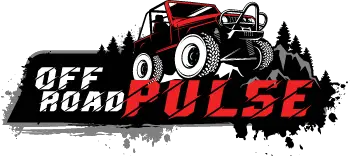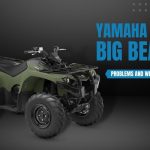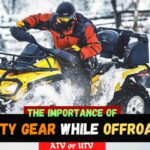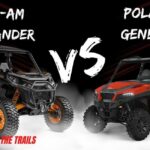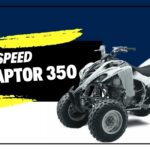ATVs have played a pivotal role in the off-road world, and they have been a part of our lifestyle for many years. There are popular for their ability to ride over rocks and other terrains that are impossible to reach with other vehicles or which would take ages to trek on foot.
Yamaha is a renowned ATV manufacturer, and it has produced some truly incredible machines for just about any off-roading and recreational activity. The Yamaha Big Bear 350, in particular, is one of the company’s biggest inventions, whose goal was to provide its users with best-in-class technology at an affordable price.
Generally, Yamaha Big Bear 350 is a capable ATV that offers power and versatility in a user-friendly design, and it is known for its sleek design. That said keep reading to discover more about Yamaha Big Bear specs, top features as well as common problems and their solutions.
About Yamaha Big Bear 350
The Big Bear 350 was launched in 1986, and was Yamaha’s first 4WD off-road vehicle. The model incorporated the latest and world-leading technologies, including a 4-stroke air-cooled engine, electric start as well as a reverse gear. And even though Yamaha no longer manufactures this model, it remains one of the company’s top sellers, having set the standards for modern 4×4 off-road vehicles.
Through the course of its production (i.e., 1986-1999), the machine adopted new features and variations to suit varying customers’ needs. The Big Bear 350 underwent several modifications, and it had up to 13 different models years under its name. For instance, the 1997 model comes in a two-wheel (2WD) drive while its predecessor featured a four-wheel drive.
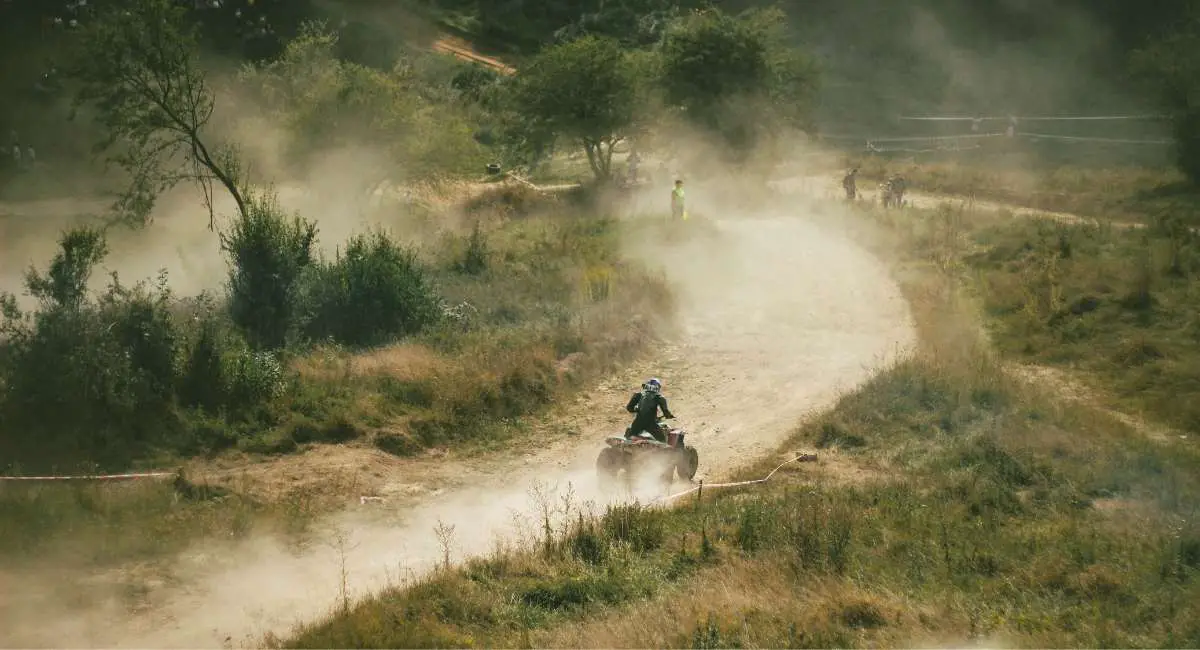
Yamaha Big Bear 350 Specs (1997 Model)
| Engine | Displacement – 348 cc Engine Type – single cylinder Engine stroke – 4 Valve configuration- SOHC Ignition- electric start |
| Transmission | Transmission type – automatic clutch system Number of speeds – 5 Speed |
| Brakes | Right-hand drum brake Left-hand/right-foot drum brake |
| Tires | Front tires – Dunlop KT404 AT25 × 8-12 Rear tires – Dunlop KT405B AT25 × 10-12 |
| General Dimensions | Length – 76.6 inches Width – 43.1 inches Height – 45.9 inches Seat height – 32.9 inches Wheel base – 48. 7inches Ground clearance – 9.65 inches Turning radius – 11.1 ft. |
| Fuel capacity | 2.64 gal. |
| Curb weight | 571 lbs. |
| Suspension | Front suspension – Double-wishbone with 3.88 inches of travel Rear suspension – Swingarm with 4.09 inches of travel |
| Top speed | 40 mph |
Key Yamaha Big Bear Features and Benefits
Compact frame: One of the highlights that makes this machine one of the best off-roaders out there is its compact frame design. This frame helps to significantly reduce its weight, which helps enhance steering while maximizing durability.
Selectable drive modes: The Big Bear 350 comes allows users to select between 2WD and 4WD drive modes for a customized riding experience. Ideally, this construction allows the rider to remain in control, especially when riding on not-so-perfect surfaces or under unfavorable weather conditions. Furthermore, the machine is effortless to stop thanks to the provision of mechanical right and left hand drum brakes.
Excellent suspension: We were delighted by the Big Bear suspension and how it is ideal for just about any off-roading gig. Both the double wishbone suspension at the front and the rear swingarm suspension work together to smoothen out bumpier trails, while allowing you to stay stable on any trail.
Convenient electric start: The machine comes with an electric start, which guarantees reliable ignition every time you start the engine. The sparks are dependable and regular with every stroke, which helps to improve engine performance. However, ensure to stick to your scheduled engine maintenance to keep it in good working condition.
High-performance transmission: This machine comes with a high/low range 5-speed automatic transmission as well as a reverse gear. This design makes it easy to maneuver any trail while making it easy to manage speed.
Safe riding: This Yamaha Big Bear is designed with off-roading speed in mind. With a top speed of up to 40 mph, you can rely on this machine to ride on just about any trail. Under favorable conditions, the machine is capable of getting up to 45 mph. That said, the top speed may be altered by several riding factors, including the vehicle condition, the rider’s weight, and the nature of the terrain.
Ample storage space: The Big Bear 350 comes with ample cargo space for all the necessities you may want to take with you on the trail. When combine this with its comfortable seating area, it is easy to see why the Big Bear 350 is one of the best four-wheelers that any off-roading enthusiast will ever come across.
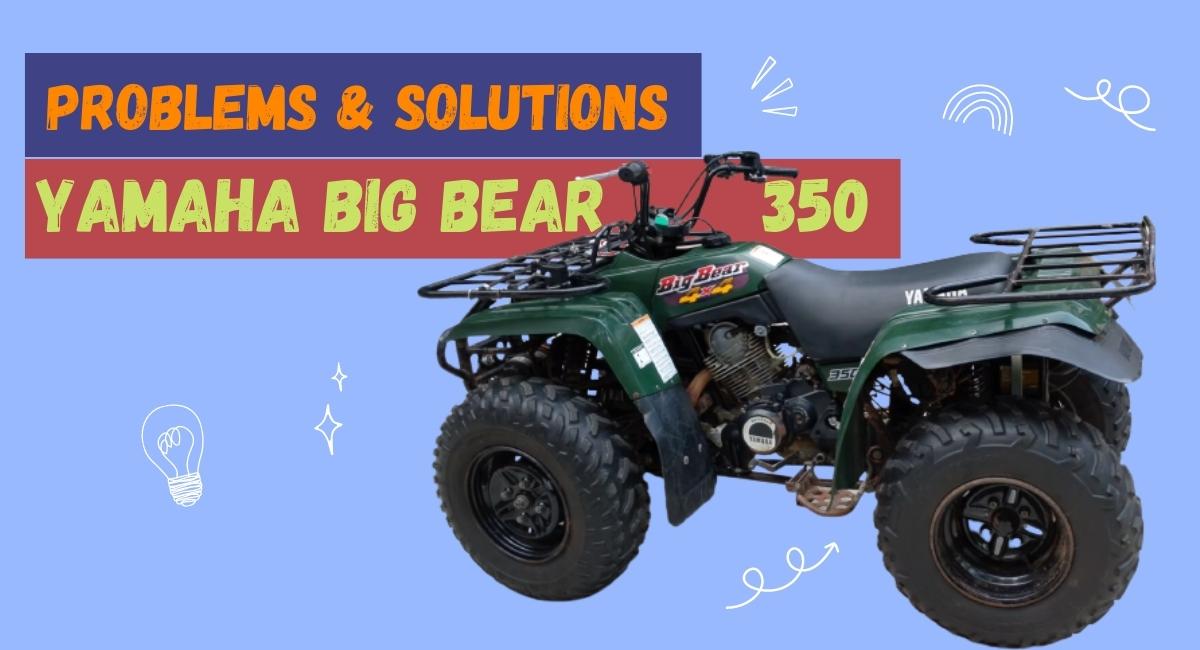
Yamaha Big Bear 350 Common Problems
1. Faulty brake system
There is nothing as scary as having an exciting ride only to find out that your brakes are not functioning. When this happens, it can be pretty annoying, especially if you don’t know what to do. If you have had your Big Bear for many years, there is a possibility of the brake system becoming damaged or failing to function for several reasons. Some of the common causes of Big Bear 350 brake problems include;
- Loose brakes
- Air within the brake system
- Damaged master cylinder
- Worn-out brake pads
- Damaged/faulty brake controls
- Damaged brake caliper
- Leakage of brake fluid
Solutions
If you notice that your braking system is faulty, the best thing to do is pull your machine aside and fix any underlying issue as soon as possible. If you ignore the issue, it can lead to irreversible damage to your brakes or even cause an accident.
If you suspect there is air trapped inside the brake system, you can easily resolve this by loosening the nuts to release the air. On the other hand, if one or more parts of the system are damaged or worn out, then you don’t have any other choice but to repair or replace them as soon as possible.
2. Transmission problems
Apart from brake issues, the Big Bear can manifest transmission problems, which can be detrimental to your riding experience. Fortunately, there are several things you can look out for to help determine if your machine has a transmission issue. These include occasional grinding noise, transmission fluid leakage, gear shifting challenges, and check engine warning light warning.
Solutions
Fixing transmission issues as soon as they appear and undertaking simple maintenance on your Big Bear can help keep the transmission in good working condition. In addition, ensure to check the condition as well as the level of your transmission fluid and refill/replace it as necessary. If you do not have prior experience with a transmission system, consider getting professional help.
3. Torque problems
In most cases, a damaged spark plug can make your Big Bear lose torque, or make it fail to start altogether. In addition, if the Yamaha Big Bear carburetor is damaged or soiled, the engine is likely to misfire as a result of compromised fuel quality. The result of this is decreased torque as well as other several torque-related issues.
Solutions
Overcoming torque issues should begin with simple fixes like a visual inspection of the engine and other electrical components for any signs of damage. In addition, ensure to drain your carburetor and clean it thoroughly to improve its performance.
While in most cases you’ll only need to make some minor adjustments, it is important to keep in mind the fact that engine repairs can be somewhat expensive. So, if you cannot pinpoint the exact problem, consider getting further assistance from a trained mechanic.
4. Reverse gear issues
Reverse gear issue is not only experienced by Big Bear owners, but it is also common with many other ATVs. The problem mainly occurs as a result of a shifting issue, but it can also be due to a lack of enough user experience. It can be quite stressful when reversing but your machine fails to engage the reverse gear. It can also be a safety hazard, especially when you are unable to back out of an impending danger.
When any vehicle refuses to slip into the reverse gear, it is often a sign of something wrong with the transmission system. For instance, the ATV may fail to engage the reverse gear when it senses a low transmission fluid level. Others causes include a faulty transmission sensor, dirty transmission fluid, and a damaged reverse gear.
Solutions
The only solution for Big Bear reverse gear problems is fixing the transmission system. If you have little knowledge of ATVs, then you can fix this yourself, but if you’re not confident enough, we recommend you visit a mechanic shop. Repairing a Yamaha 350 outboard problems and a defective reverse gear is best left to a trained mechanic.
5. Insufficient power
Apart from gear and transmission issues, there are also several complaints concerning insufficient power. The Big Bear 350 can lose power due to several reasons, but the common ones are as a result of engine failure, dead battery, insufficient fuel, damaged engine parts, among others. For efficient operation, you’ll require power in the battery and enough fuel, and if any of these is lacking, then your ATV will not run as expected.
Solutions
There are several measures you can undertake when you’re experiencing power problems. First, you’ll need to check your fuel system to ensure you have sufficient fuel. You might also need to inspect the cables that connect the Big Bear motor to the engine. If you notice any signs of damage, consider getting them replaced as soon as possible.
In addition, you may want to check your engine oil to ensure that it is in good condition and at the correct level. If the oil is below the recommended level, you’ll need to refill your tank with the recommended oil type. Finally, inspect the spark plugs to determine if they are burned or cracked. If so, replace them with functional spark plugs or a brand-new set.
Parting Shot!
While it comes with its own share of shortcomings, Yamaha Big Bear 350 is an undoubtedly well-engineered and capable quad bike. You can rely on this machine for a full day of trail riding, plus it performs exceptionally well when used for various types of tasks. And while the top speed is somewhat lacking, it is more than enough for standard trail riding applications, including hunting, touring through the farm, and site seeing.
